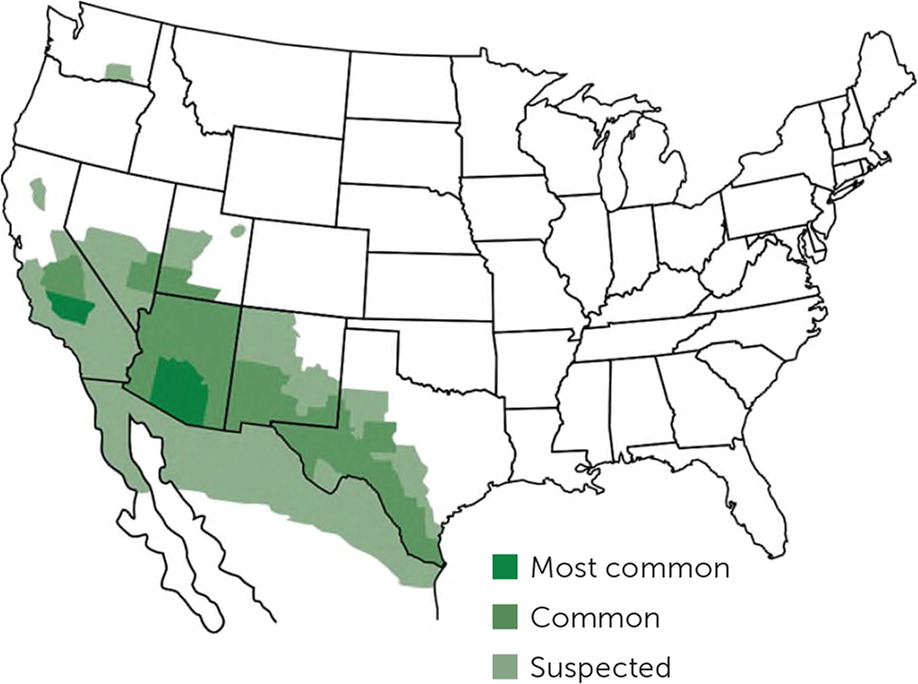
Am Fam Physician. 2020;101(4):online
Related article: Coccidioidomycosis (Valley Fever) in Primary Care
What is valley fever?
Valley fever (also called coccidioidomycosis, or cocci [COX-ee] for short) is an infection caused by mold that grows in outdoor dirt. It is most common in the southwest United States, especially in parts of Arizona and southern California (see map). You can’t get it if you don’t live in those areas and haven’t visited there, even if you’ve been around people from there.

How do you get it?
Sometimes dirt gets blown by the wind and the mold flies into the air. People then breathe in the mold, and some get sick with a lung infection. But many people don’t get sick at all. Valley fever can’t be spread from person to person, or from animals to people.
How can I keep from catching it?
Valley fever is hard to prevent because the mold that causes it is in the air. Some doctors suggest that people avoid dusty outdoor areas in parts of the country where it’s common.
How is it treated?
Most people who get sick will get better on their own with no treatment. Your doctor will want you to have blood tests and x-rays every few months to be sure you are getting better. Pregnant women and people with certain medical problems might need to take medicine to kill the mold. Antibiotics won’t help because they don’t kill mold.
Where can I find more information?
Your doctor
American Lung Association
American Thoracic Society
Centers for Disease Control and Prevention
Chest Foundation
Infectious Diseases Society of America
Valley Fever Center for Excellence
